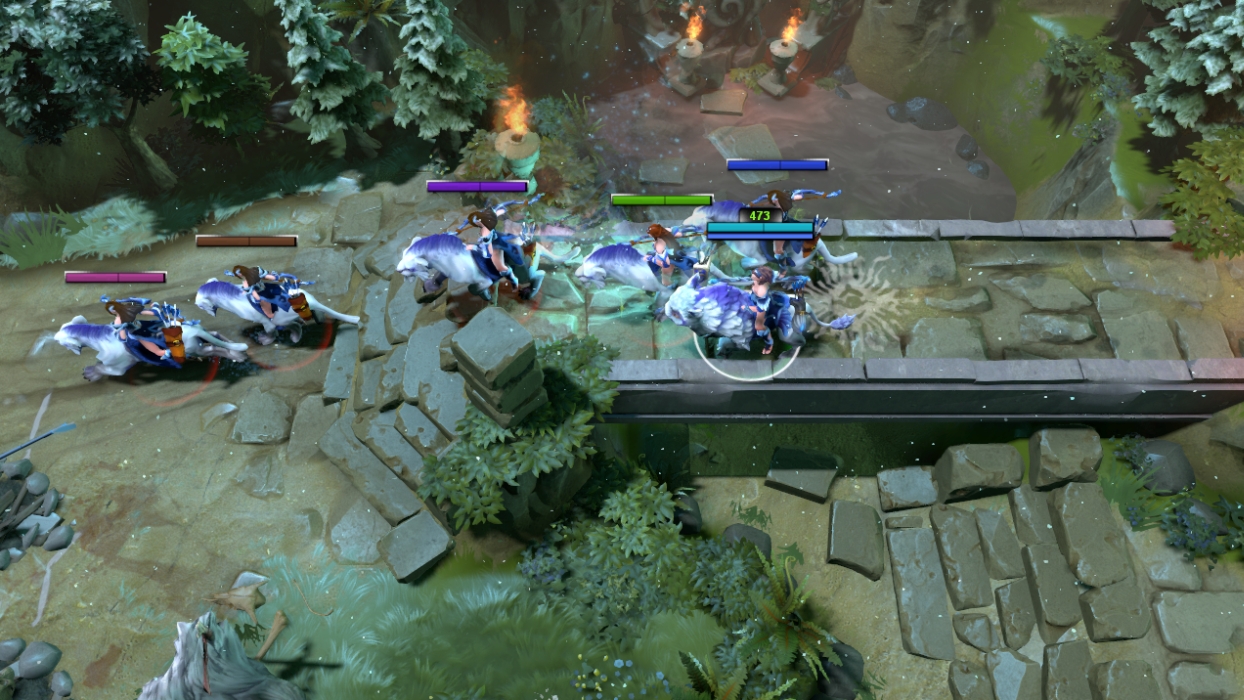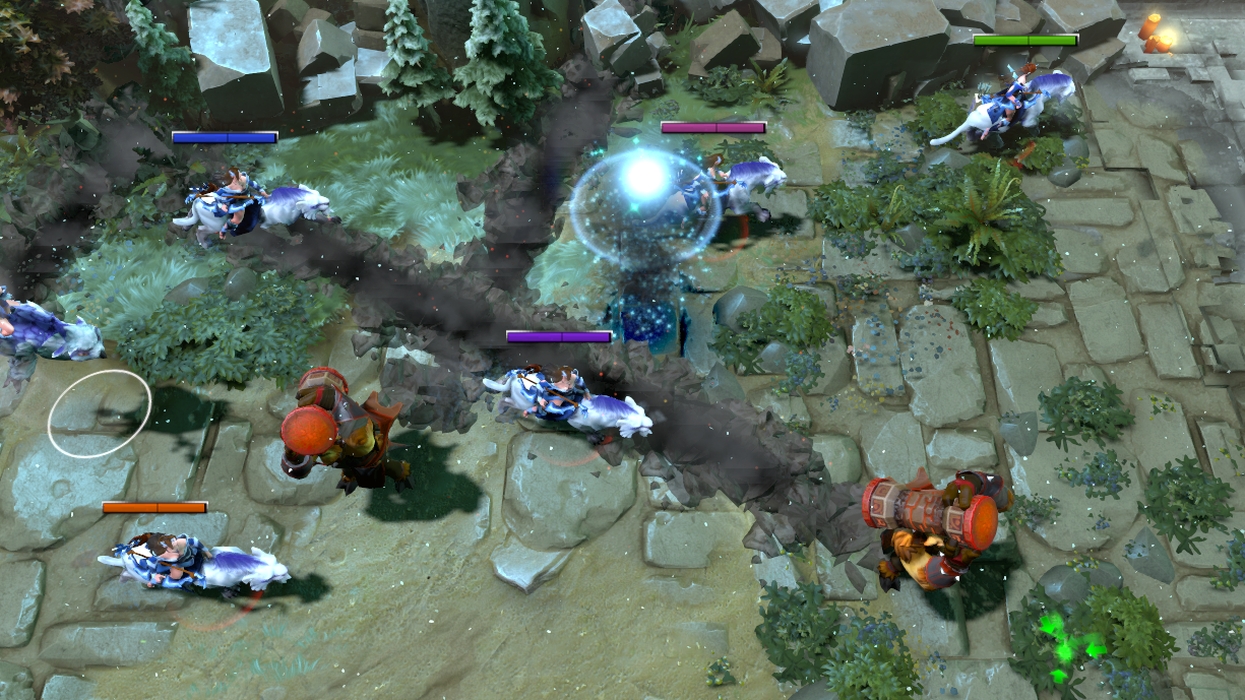Dota 2 custom game of the week: Dota Run

Every Saturday, we’ll highlight a Dota 2 custom game that is fun, playable, and relatively bug-free. To find a custom game, go to the ‘Custom Games’ tab in Dota 2 and enter the name as we’ve provided it in the search box in the top right—in this case, Dota Run.
Dota Run as been around for a while—it was one of the early successes of the Reborn beta, and it’s been updated consistently since then. That’s one of the reasons I’m choosing to highlight it this week: this is a fun, stable party mode that is old enough to have both a decent-sized playerbase and a respectably low number of technical issues. If you’ve never tried it, and you’re tired of wading through promising but incomplete first releases of new custom games, give it a try.
This is a free-for-all mode for up to ten players. Everybody is Mirana, and Mirana is—for the sake of this mode—a racecar. A long and winding obstacle course stretches out ahead of you, and your job is to reach the end before everybody else. Doing so nets you the maximum amount of points, with runners-up receiving steadily fewer points until everybody has finished. Multiple races are run, with the winner declared when somebody reaches 30 points—normally after thirty minutes or so.
Dota Run’s strongest asset is the course itself. The mode’s creators have taken characters and skills from the base game and turned them into obstacles. You’ll dodge Magnus as he charges towards you down one straight stretch, avoid Pudge hooks, Earth Spirit remnants, and a rotating lattice of Earthshaker fissures. The geography of each area frames these dangers differently and supports different approaches. Getting better at Dota Run is a case of learning the patterns and figuring out when and how to use your limited stock of power-ups.
Right—power ups. These are the second best thing about Dota Run. By default, every player only has a single active ability—a Force Staff on a long cooldown. By running over pads you can pick up one-shot abilities and items, and these are being added to all of the time. By way of a recent example, the latest patch added Windranger’s Shackleshot. Tying two opponents together before Force Staffing yourself off into the distance is a great feeling.

As is using Manta Style to dodge a projectile or block a narrow passageway with an illusion. As is using Tiny’s Toss to throw a competitor back into the pack, or using Vengeful Spirit’s Nether Swap to suddenly break away yourself. Jakiro’s Ice Path can be devastating, as can Meepo’s Earthbind, and Blink is a secret weapon that can be used defensively or to open up shortcuts.
Dota Run uses the base game’s movement logic, so saving your Force Staff for the right moments is crucial. In several areas, you can push yourself up and over cliffs to break ahead, and your ability to do so doesn’t break the game. Later, you can use Force Staff to knock down trees and open up new pathways in a winding forest section, but doing so leaves the pathway open for everybody else, too. These are the tactical considerations that elevate Dota Run from a silly knockabout to something where it is possible to demonstrate actual understanding and skill—although it very much works as silly knockabout, too.
I didn’t encounter too many problems finding a game with strangers, and the free-for-all format means there’s less pressure to fill out the lobby. That said, the developers recommend playing with friends and I agree: like the great friendship-ruining console kart racers of old, Dota Run’s appeal is based on the joy of completely screwing over somebody you otherwise like. It’s fun to bodyblock a stranger in front of an incoming Pudge hook, but it’s much more fun if you can hear them cry out in frustration. Ruining friendships is what these games were built for.
The biggest gaming news, reviews and hardware deals
Keep up to date with the most important stories and the best deals, as picked by the PC Gamer team.

PC Gamer Pro is dedicated to esports and competitive gaming. Check back every day for exciting, fun and informative articles about League of Legends, Dota 2, Hearthstone, CS:GO and more. GL HF!
Joining in 2011, Chris made his start with PC Gamer turning beautiful trees into magazines, first as a writer and later as deputy editor. Once PCG's reluctant MMO champion , his discovery of Dota 2 in 2012 led him to much darker, stranger places. In 2015, Chris became the editor of PC Gamer Pro, overseeing our online coverage of competitive gaming and esports. He left in 2017, and can be now found making games and recording the Crate & Crowbar podcast.


